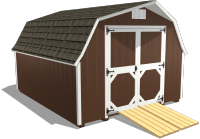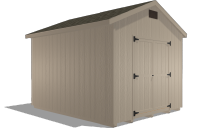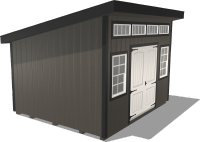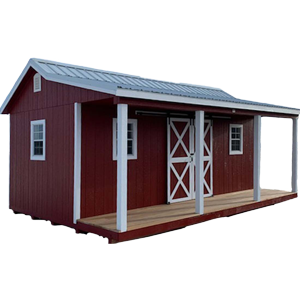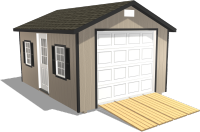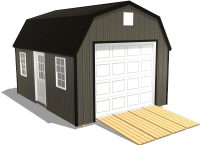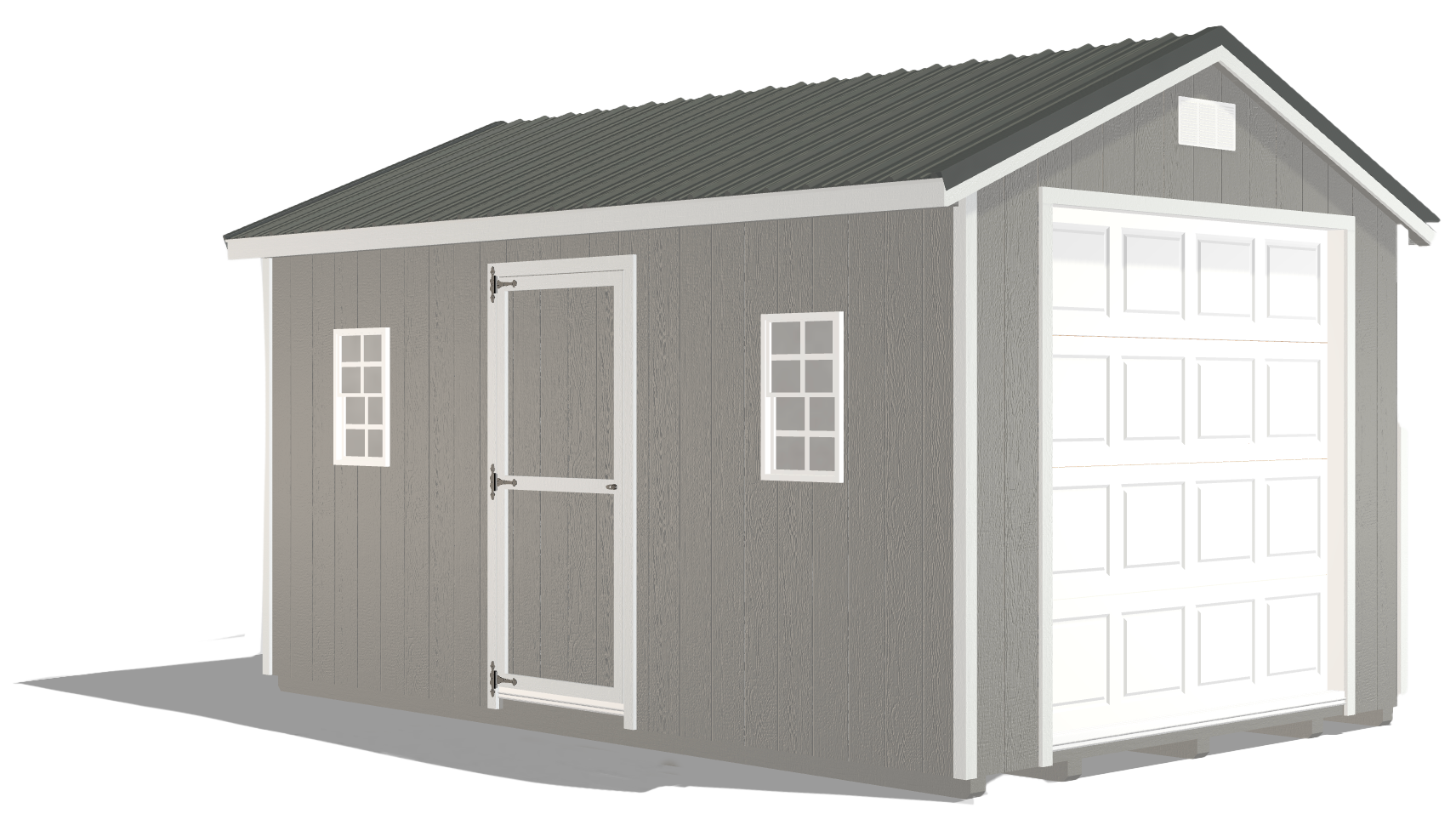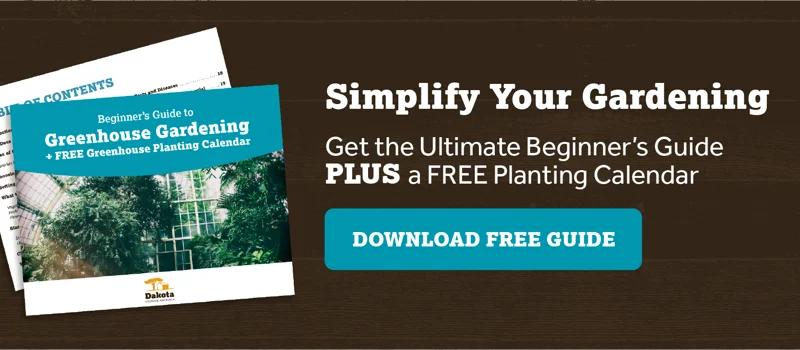Growing Greenhouse Tomatoes and Peppers? Here's How to Boost Yield
by Dakota Storage Buildings, on July 11, 2025

Tomatoes and peppers are popular greenhouse plants, and for good reason. They thrive in the warmth, respond well to consistent care, and produce bountiful harvests that are hard to beat in flavor.
But as any seasoned gardener knows, they also come with challenges.
From managing temperature swings to preventing pest pressure, greenhouse tomatoes and peppers need a setup built for success.
In this blog, we’ll walk you through a step-by-step guide to creating the ideal greenhouse gardening environment for raising tomatoes in a greenhouse and how to ripen greenhouse tomatoes, so you can harvest more fruit with less hassle.
How To Create the Right Climate for Thriving Tomatoes and Peppers
Tomatoes and peppers are heat-loving crops. They thrive in the consistent, controlled climate of a greenhouse, but only if that climate stays within their preferred range.

Temperatures that drop too low can stunt growth and delay fruiting. On the flip side, excessive heat (above 90°F) can lead to flower drop and poor fruit set.
3 Tips for Managing Temperature
- Use automatic roof vents or louvered side vents to prevent overheating on warm days.
- Install a small heater or thermal mass system (like water barrels) to help stabilize nighttime temps.
- Place a thermometer and hygrometer in the greenhouse to monitor both heat and humidity levels regularly.
Humidity control is key, too. High humidity encourages fungal diseases, while dry air can stress your plants. Aim for 60–70% relative humidity and use fans or dehumidifiers as needed.
Smart Watering for Stronger Roots and Higher Yields
Greenhouse tomatoes and peppers are sensitive to both under- and overwatering. Inconsistent moisture can lead to blossom-end rot, cracked fruit, or stunted growth.
3 Best Practices for Watering Greenhouse Plants
- Use drip irrigation or soaker hoses for slow, consistent watering that targets the roots.
- Water in the morning to reduce evaporation and allow leaves to dry before evening (this prevents mildew and rot).
- Avoid overhead watering, which increases disease risk.
Invest in a moisture meter or simply check the top 1–2 inches of soil regularly. It should feel moist, not soggy or bone-dry. Mulching around the base of plants also helps retain moisture and regulate soil temperature.
Supporting Tomatoes and Peppers the Right Way
Tomatoes and peppers may not seem like climbers, but they definitely need support.
As fruit develops, stems can bend or break without reinforcement, especially in the warm, humid conditions of a greenhouse where plants grow faster.
Space-Saving Support Ideas
Tomato cages or spiral stakes are ideal for bushy determinate tomato varieties. They’re easy to install and help keep the plant upright as it fruits.
Vertical trellising works well for indeterminate tomatoes or taller pepper varieties. Tie stems gently to strings or stakes to encourage them to grow upward and save floor space.
Hanging baskets or wall-mounted systems are great for smaller pepper plants or cherry tomatoes in compact greenhouses.
No matter which support you use, give plants plenty of room. Adequate spacing allows for better airflow, reduces disease risk, and makes harvesting easier. By installing supports early, you can guide growth and avoid damaging stems later on.
The Best Defense Against Common Greenhouse Pests
Even with greenhouse gardening, pests can find their way in, and once they do, the warm, humid environment can cause populations to explode quickly.

Greenhouse tomatoes and peppers are especially vulnerable to a few notorious troublemakers, like:
- Aphids: These tiny sap-suckers cluster on new growth, causing curled leaves and stunted development.
- Whiteflies: Often found on the undersides of leaves, they suck plant juices and leave behind sticky honeydew that attracts mold.
- Spider Mites: Almost invisible to the naked eye, they thrive in hot, dry conditions and can cause speckled, yellowing leaves and webbing.
- Fungus Gnats: Attracted to moist soil, their larvae can damage roots and stress young plants.
Prevention Tips
Pests may be small, but their impact can be huge, especially in the warm, humid environment of a greenhouse. A few simple habits can go a long way in keeping your tomato and pepper plants healthy.
Here’s how to keep pests at bay and your harvest on track:
- Keep Air Circulating: Good airflow is one of your best defenses. Stale, humid air creates the perfect breeding ground for pests and disease. Use fans and ventilation to move air consistently throughout the space.
- Inspect Plants Regularly: Check the tops and bottoms of leaves weekly for signs of damage or eggs. Early detection is key to preventing outbreaks.
- Use Yellow Sticky Traps: These traps are effective for catching adult whiteflies, fungus gnats, and other flying insects before they reproduce.
- Introduce Beneficial Insects: Natural predators like ladybugs, lacewings, and predatory mites help keep pest populations under control without chemicals.
- Quarantine New Plants: Before adding any new plant to your greenhouse, isolate it for a few days to a week. This gives you time to observe and treat any hidden infestations.
- Control Soil Moisture: Fungus gnats thrive in overly damp conditions. Let the top inch of soil dry out between waterings and use well-draining soil mixes.
- Sanitize Tools and Containers: Dirty tools and reused containers can harbor insect eggs or larvae. Clean them between uses to prevent accidental transfers.
- Organic Treatments: If pests show up, start with gentle solutions like insecticidal soap, neem oil, or horticultural oils. These are safer for plants and beneficial insects when used correctly.
- Act Fast: The sooner you respond, the easier it is to stop a small problem from becoming a full-blown infestation.
By following these tips, you can keep your greenhouse thriving and your pest problems under control.
The Setup Checklist Your Greenhouse Tomatoes and Peppers Will Love
Want the best shot at a high-yield harvest while raising tomatoes in a greenhouse? A few smart setup adjustments can make all the difference. These tips will help you create a greenhouse environment where greenhouse tomatoes and peppers can truly thrive.

1. Soil Prep
Healthy plants start with healthy soil.
Use a light, well-draining soil mix enriched with organic matter like compost, coconut coir, or peat moss to maintain structure and moisture balance. Since tomatoes and peppers are heavy feeders, mix in a slow-release organic fertilizer or amendments such as:
- Worm castings for added microbial life.
- Bone meal for strong root development and fruit production.
- Composted chicken manure for a nitrogen boost.
Test your soil pH and aim for a range of 6.0 to 6.8 for best nutrient uptake.
2. Container & Bed Setup
Your planting setup affects root development, drainage, and airflow.
- For individual plants, use at least 5-gallon containers. Bigger is better, especially for indeterminate tomato varieties.
- Raised beds offer better drainage and can accommodate multiple plants with efficient layout options.
- Make sure every pot or bed has excellent drainage holes to prevent waterlogging and root rot.
- Consider self-watering containers or grow bags if you’re looking for a low-maintenance option.
Pro Tip: Elevate containers slightly to improve drainage and airflow beneath them.
3. Spacing & Layout
Good spacing is crucial to preventing overcrowding, which leads to poor airflow and increased disease risk.
- Tomatoes: Space at least 18–24 inches apart, more for indeterminate varieties or if trellising.
- Peppers: Space 12–18 inches apart, depending on variety and container size.
- Place taller plants like indeterminate tomatoes along the north or west sides of the greenhouse to avoid shading shorter crops.
- Create walkways between rows or beds so you can access plants for pruning, harvesting, and pest checks without damage.
Try a zigzag planting pattern in raised beds to increase airflow while maximizing space.
4. Ventilation Placement
Proper airflow reduces disease, controls humidity, and supports pollination.
- Install roof vents, louvered side vents, and exhaust fans to keep air circulating. This is especially crucial during flowering and fruiting.
- Add oscillating fans at plant height to prevent stagnant air pockets around dense foliage.
- Set your ventilation to be automated if possible, opening and closing as temperature or humidity fluctuates.
A well-ventilated greenhouse helps reduce the risk of blossom end rot, mildew, and fungal infections.
5. Lighting Considerations
Greenhouse tomatoes and peppers need 6–8 hours of direct sunlight per day, but too much heat can stress or damage plants.
- In warmer months, shade cloth (30–50% opacity) helps diffuse intense midday sun and prevent leaf scorching.
- Position taller crops or structures to offer natural afternoon shade to more sensitive varieties like sweet peppers.
- In winter or low-light conditions, supplement with grow lights (full-spectrum LEDs or high-output fluorescents) to maintain strong growth and fruiting.
Bonus Tip: Reflective surfaces (like Mylar or white-painted walls) can boost light exposure in shaded areas of the greenhouse.
Set Up Right, Harvest All Season

Greenhouse gardening with tomatoes and peppers may take a little extra setup, but the reward is more than worth it. With a stable environment, strategic layout, and regular care, you’ll enjoy an extended growing season and more fruit than you thought possible.
The key to success is creating the right environment. The better your setup, the easier it becomes to manage temperature, moisture, and pests, so you can focus on harvesting beautiful, flavorful crops.
Want to grow even more confidently? Download our free Beginner’s Guide to Greenhouse Gardening and build your best garden season yet.





